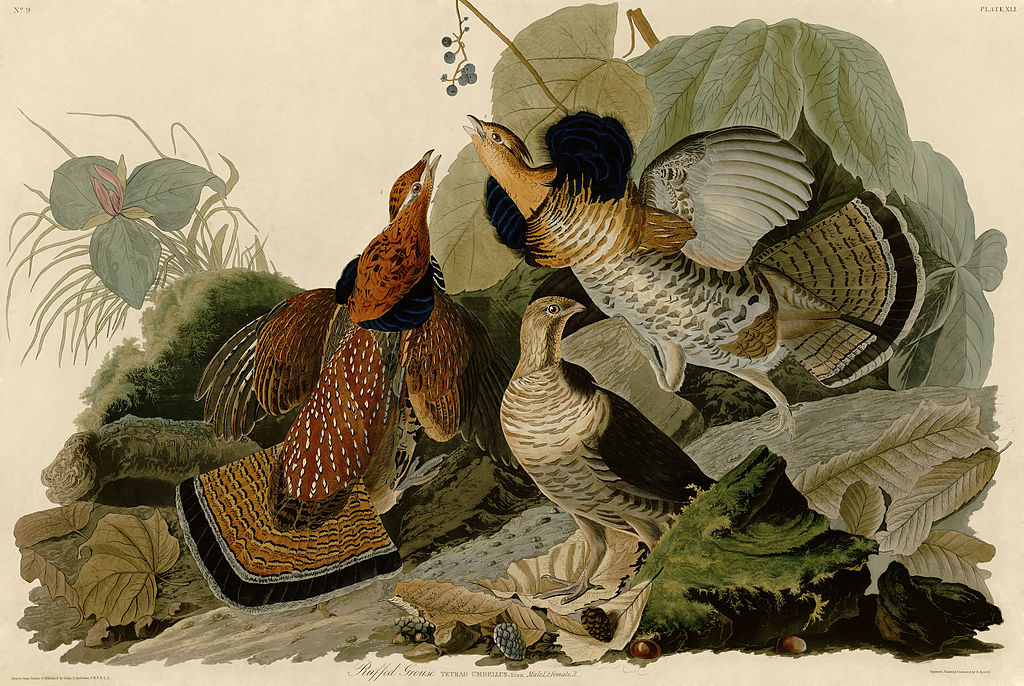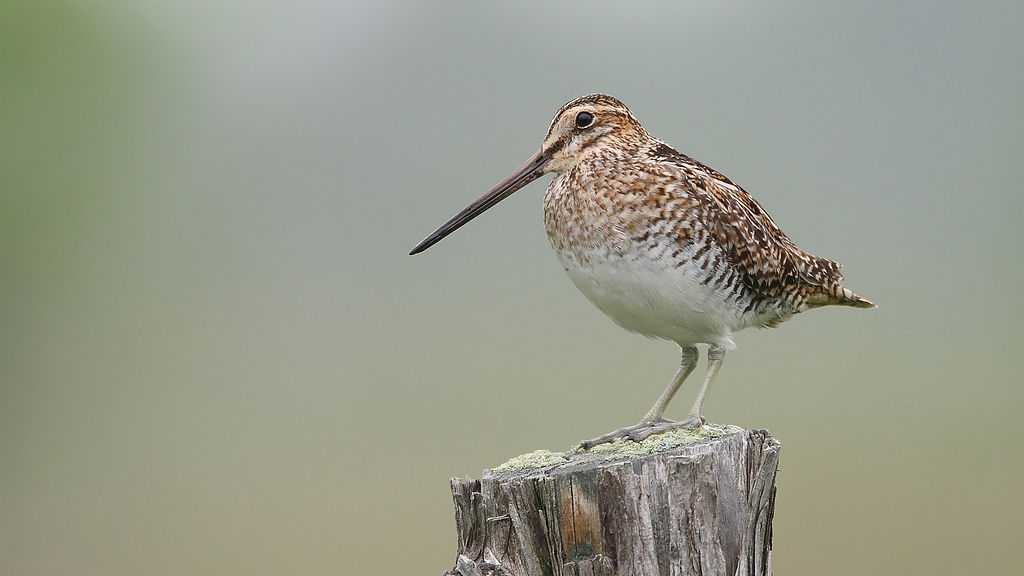Writing Sound: Darwin and the love of birds


Outer tail-feather of Scolopax gallinago, illustration in Darwin’s The Descent of Man, By Internet Archive Book Images [No restrictions], via Wikimedia Commons.
Seeking a quote to share for International Darwin Day, I soon found connection with another celebration just around the corner: Valentine’s Day. It turns out that when Charles Darwin wrote about bird sound and song, he also wrote of love and connection:
We can concentrate…greater intensity of feeling in a single musical note than in pages of writing. Nearly the same emotions, but much weaker and less complex, are probably felt by birds when the male pours forth his full volume of song…Love is still the commonest theme of our own songs.
When we think birds and love, it’s easy to focus on the vocal. Indeed, Darwin has a great deal to say about bird songs and sexual selection. But he also wrote about the instrumental sounds that birds make in pursuit of mates:
The diversity of the sounds, both vocal and instrumental, made by the males of many species during the breeding-season, and the diversity of the means for producing such sounds, are highly remarkable…It is not difficult to imagine the steps by which the notes of a bird, primarily used as a mere call or for some other purpose, might have been improved into a melodious love-song. This is somewhat more difficult in the case of the modified feathers, by which the drumming, whistling, or roaring noises are produced. But we have seen that some birds during their courtship flutter, shake, or rattle their unmodified feathers together; and if the females were led to select the best performers, the males which possessed the strongest or thickest, or most attenuated feathers…would be the most successful; and thus by slow degrees the feathers might be modified to almost any extent…
Let’s take a listen to a couple of examples of instrumental bird sounds. Darwin quoted descriptions of the Ruffed Grouse’s mating displays:
Another North American grouse, the Tetrao umbellus, when with his tail erect, his ruffs displayed, “he shows off his itnery to the females, who lie hid in the neighbourhood,” drums rapidly with his “lowered wings on the trunk of a fallen tree,” or, according to Audubon, against his own body; the sound thus produced is compared by some to distant thunder, and by others to the quick roll of a drum.
Click here to Listen
He goes on to describe the Common Snipe (Gallinago gallinago):
The drumming, or bleating, or neighing, or thundering noise, as expressed by different observers, which is made by the common snipe (Scolopax gallinago) must have surprised every one who has ever heard it.
Once considered the same species as Europe’s Common Snipe, the North American Wilson’s Snipe (Gallinago delicata) makes a similar sound, as heard in this Audio Postcard from Yellowstone National Park:
Click Here to Listen

Wilson’s Snipe by Mdf used in accordance with CC-BY-SA-3.0 (http://creativecommons.org/licenses/by-sa/3.0/) via Wikimedia Commons.
In the Audio Postcard, we hear from Katy Duffy, Interpretive Planner for Yellowstone National Park and a self-confessed “addicted birder.” Her description of the Wilson’s Snipe’s siren “song”:
What male Wilson’s snipe do this time of the year — in the Spring — they do this flight — these winnowing flights is what they’re called — So each time they flap their wings it pushes air through the stiff outer tail feathers and it makes that “woo woo woo woo woo” kind of sound…It’s a metallic sound. It’s goin’ on over your head so it’s really hard to pinpoint where the bird is. It’s eerie. It’s strange because it’s often happening at dusk or at night, so it’s coming out of the darkness. That’s what’s fascinating is that it happens at a time that’s sort of magical. I always think of dusk as magical because almost anything can happen. Your imagination kind of goes wild and when you hear sounds out of this, oh, semi-darkness, they seem ethereal…otherworldly…wild…and they are! And it’s neat. We use other senses. I love when we use more than just our eyes.
What a world that we live in, where two distinct celebrations – Darwin’s Day and Valentine’s Day – provide through their coincidence an opportunity to reflect on connection, love, and our sensory experience of the world. It does my heart good to read – and hear – sounds that were as inspiring to a naturalist who changed the world more than a century ago as they are to today’s scientists, birders, and lovers of the wild.
The Acoustic Atlas is curated by the Montana State University Library and includes more than 2500 recordings of species and environments from throughout the Western United States. Our collection emphasizes the strong connection between natural sounds and regional ecosystems, and features a growing number of recordings from Montana and the Yellowstone corridor. Sounds are provided with the help of volunteers, researchers, and through collaborations with agencies like the National Park Service.
Source for Darwin quotes: The Descent of Man: And Selection in Relation to Sex, Volume 2 by Charles Darwin
“Ruffed Grouse” audio copyright Kevin Colver, 2014, all rights reserved. “Snipe Hunt” Audio Postcard, produced by Yellowstone National Park, public domain.
